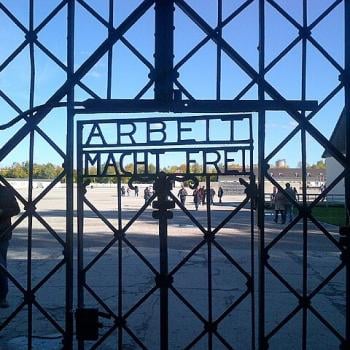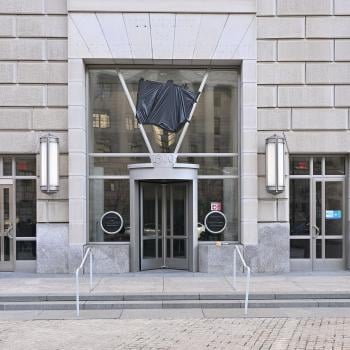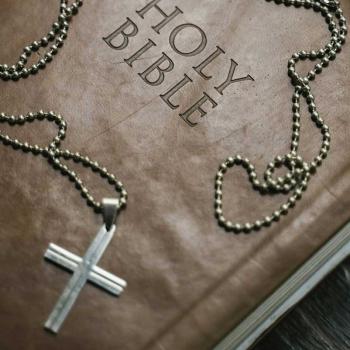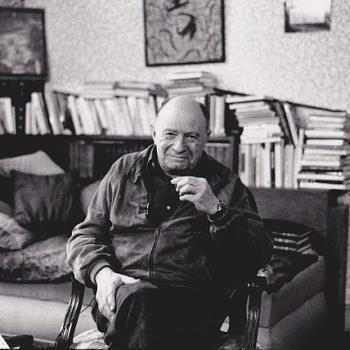Denomination of the Week: The Church with No Name (The Truth/Two By Twos)
I have had a nearly lifelong fascination with this denomination (which, like many, does not consider itself a denomination). Scholars of American religion often call this the largest single house church movement in North America although no outsider knows how large it actually is. Certainly the denomination’s members do not consider it a “secret” organization, but one of its attractions to scholars and students of American religion is its seeming secrecy. The denomination publishes nothing about itself, does not advertise itself (except in announcements of “Gospel Meetings”), does not seek publicity and actually avoids it, and, in many if not most cases, declines to give out information about itself to researchers. There are numerous web sites about the denomination mostly by former members. The denomination itself hosts no public web site.
So what is this “Church with No Name?” Well, it has no name, so…. Outsiders call it by various monikers such as “Two By Twos” and “the Worker Sect.” Insiders refer to it simply as “The Truth.” However, the denomination has registered with some government agencies as “Christian Conventions” for tax purposes.
I first came into awareness of this denomination when I was a child because one of my father’s several brothers was a member of it and hosted a meeting in his home. He had served as a missionary with the denomination in South America and his wife, my aunt, was Latin American. My cousins grew up speaking Spanish as well as English which fascinated me. But what fascinated me more was my uncle’s (and his family’s) behavior about their religious affiliation. They certainly considered themselves “Christians,” but would not discuss their church or beliefs with any relatives. When they were not present, for example at family reunions before they arrived or when they were absent, especially the evangelical members of the family would talk about their “religion” as non-Christian because, so it was said, they did not believe in the deity of Christ or the Trinity. And, also, it was said, they thought they were the only “real Christians.”
One of my earliest memories of my uncle, who was a very gentle and kind man, is of him getting up from the dinner table at family reunions and walking away into another room when prayer was offered over the meal. My father explained to me that his brother did not believe in praying with “unbelievers.” Unbelievers–us? My father’s side of the family was composed of very passionate believers—Pentecostals, Church of God (Anderson, Indiana), Presbyterians, and Catholics. Later, when in seminary, I wrote to my uncle about his religious faith because I wanted to write a paper about its history and theology for a class in American Christianity. He not only did not write back; the next time I saw him he said “You didn’t get an answer to your letter, did you?”
I knew that we, my family and some of my aunts and uncles, belonged to a religious form of life some people considered a “cult.” We were Pentecostals. So I was fascinated, even as a teenager, with “cults and sects.” I read every book I could get my hands on that dealt with the subject. By the time I graduated high school I had read virtually every book like that and was especially taken with books by religion scholar Marcus Bach (whom I have mentioned here before). One day, at a used bookstore, I picked up what is probably the book I have owned the longest (other than Bibles and hymnbooks): Christian Truth and Religious Delusions by Lutheran pastor-theologian Casper Nervig (Augsburg Publishing House, 1941). The book contains a chapter on “Pentecostalism” subtitled “Some Truth—Much Error.” I read the chapter with horror because it contains much distortion of Pentecostalism based on rumor. What it says, how it describes Pentecostalism, might be true of snake handlers, but not of most Pentecostals. The book also contains (which is one reason I bought it!) a chapter titled “Christian Science, Spiritism, Two-By-Twos, No-Creed.” The chapter has no subtitle but describes these groups as non-Christian under the guise of being Christian. Needless to say, I didn’t trust the description of “Two-By-Twos” because of the distorted information about Pentecostalism in the book! That was one reason I wanted to communicate with my uncle about his “religion.” I wanted to get the truth about “The Truth!”
Over the years I have read much about The Church with No Name—all of it by outsiders. I have also met and had conversations with several people who grew up in it and a few who accidently wandered into one of its “Gospel Meetings”—its form of outreach and evangelism. Recently I have learned from former members that my uncle’s practice of leaving the room during prayer with “unbelievers” and refusing to discuss the group’s beliefs with outsiders has by-and-large dropped away. However, the denomination still does not publish anything for public consumption about itself. In fact, the only thing it formally publishes (other than insider circular newsletters) is a hymnbook published in Scotland (Hymns Old and New).
The denomination was born in Ireland around the turn of the previous century (circa 1900) and was founded by a man named William Irvine who later either left the group or was excommunicated. He had previously been associated with a loose confederation of house churches known in Great Britain and Ireland as “Faith Missions.” The movement grew in Great Britain and Ireland, spread to Europe and North America and eventually became worldwide. No outsider that I know of has any reliable idea of its size. Some scholars have guessed it has about one hundred thousand members.
The “Two By Two” moniker came from the fact that the denomination is led by single/unmarried missionaries who travel “two by two”—usually within a certain district—holding Gospel Meetings and visiting house churches. Other leaders are “overseers” who organize district wide “conventions” of house church members. When I lived in Minnesota the Minneapolis Star-Tribune published a series of articles about “The Church with No Name” that focused on the Upper Midwest convention held annually at a large farm somewhere northwest of the Twin Cities. According to the article up to a thousand members attended the convention which lasted for several days or a week. These conventions focus on preaching and teaching and organizational issues. According to one former member I interviewed, the denomination has its own cash-based economy for paying “workers” who own no property and depend entirely on support by members.
According to my sources, the Church with No Name, “The Truth,” has no creed or formal confessional statement; beliefs are handed down through teaching authorities orally and sometimes in circular newsletters. There is no central authority or headquarters. (But according to relatives who knew my uncle and his family well, when they traveled they always knew very specifically where the nearest house church was and who led it and when members traveled to their area they knew to attend the house church that met in their home.)
Also according to my sources the denomination generally does not teach the triunity of God but does consider Jesus Christ the only savior. He is not considered “God” but more than a mere man. The group baptizes believers by immersion and considers itself the only true church of Jesus Christ. Other “churches” are generally considered false churches. In order to be a true Christian one needs to join this group. Yet, according to a recent source, who grew up in the Church with No Name, these attitudes and opinions are loosening somewhat.
When I was growing up, observing my uncle, aunt and cousins, I noticed they did not have a television in their home and did not watch television anywhere. My cousins knew little to nothing about television. My aunt did not cut her hair and wore extremely modest clothing. (My uncle is now deceased but my wife and I visited my aunt about ten years ago when we found ourselves in the city where she lived. My dear aunt expressed strong disapproval of my wife wearing pants!) My cousins did not attend movies or listen to secular music—at least when they lived at home. But all that was very much like our own 1950s Pentecostal lifestyle! We rarely watched television and, when we had a television, it was normally turned off. We never went to movies in movie theaters (only “Christian films” shown in church meetings or Youth for Christ events) and my stepmother didn’t wear pants until the 1970s! When I was a child in the 1950s Pentecostal women did not wear pants or make up or jewelry. Pentecostal men did not wear long hair or facial hair to say nothing of ear rings or short pants! Pentecostal boys and girls did not swim together—“mixed bathing” was a sin! And we considered the vast majority of other churches little more than religious clubs. All that is to say—the lifestyle of so-called Two By Twos was not that different from our Pentecostal lifestyle. My sources inform me that, too, is gradually changing.
According to my sources, house churches of this denomination exist in virtually every city of any size in the United States and Canada. But you will not find them by looking in any phone book or listings of “Churches” on the web or elsewhere. The only public sign of their existence would be an advertisement for a “Gospel Meeting” to be held in some rented space.












